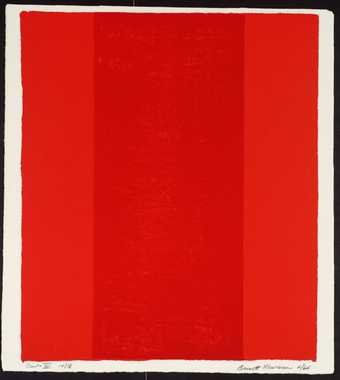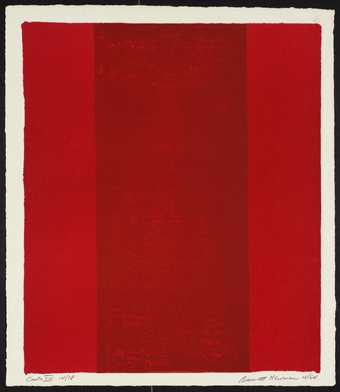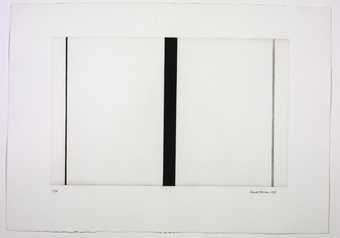
Barnett Newman
Canto XV (1963–4)
Tate
Newman's paintings are impossible to grasp from reproductions. They require us to stand before them, close enough to experience all their nuances of colour and structure. So adamant was Newman about the way his art should be viewed that he once typed a statement and stuck it to the gallery wall instructing people to stand at only a 'short distance' from his canvases. Seen in proximity, Newman believed that his work could engender feelings of heightened self-awareness. 'I hope that my painting has the impact of giving someone, as it did me, the feeling of his own totality, of his own separateness, of his own individuality,' he said.
Though Newman always insisted on the rich emotional content of his work, for most of his life it met with incomprehension and charges of 'emptiness'. He kept nothing he made before he was nearly forty years old, and over the rest of his career produced only around 120 paintings. It was not until he was nearly sixty that he began to be recognised as one of America's foremost artists.
The exhibition is curated by Anne Temkin and organised by the Philadelphia Museum of Art and Tate Modern, London, with the generous support of the Henry Luce Foundation, Inc., The Barnett and Annalee Newman Foundation, and the Philadelphia Exhibitions Initiative, a program funded by The Pew Charitable Trusts, and administered by The University of the Arts, Philadelphia. The installation at Tate Modern is curated by Sir Nicholas Serota, Director, Tate, and Sheena Wagstaff, Head of Exhibitions and Displays.
Supported by: The Henry Luce Foundation



